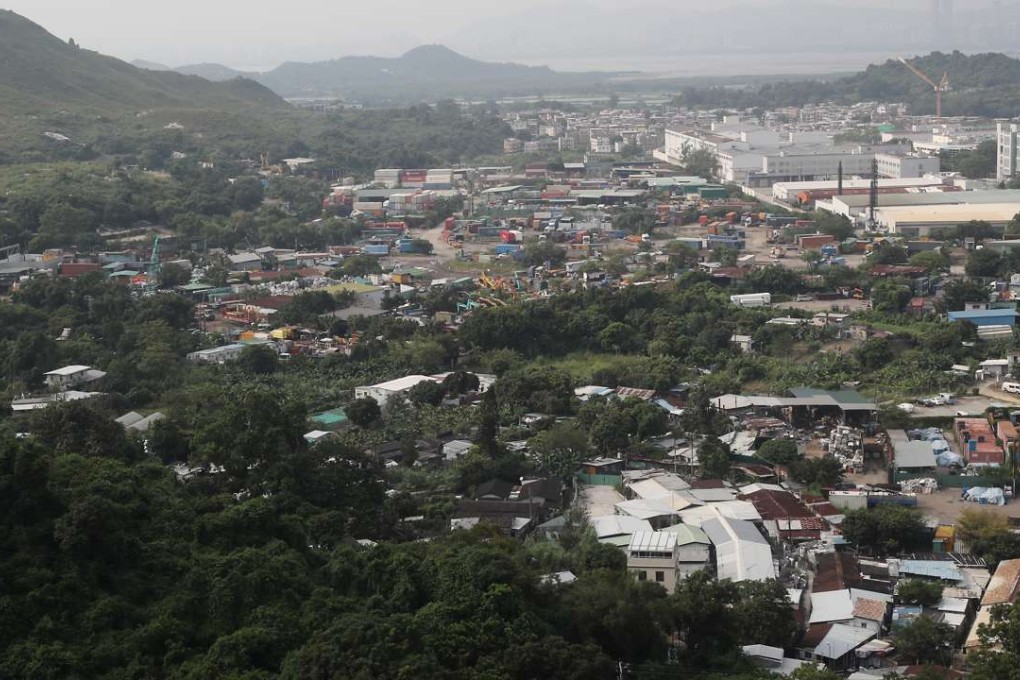Bulk of land set aside for contentious Hong Kong housing project in private hands, reports reveal
Newly released reports show at least half of the privately owned area comprises brownfield sites with car parks, container storage areas and recycling yards

Almost 70 per cent of land at a site set aside for a controversial public housing development in Wang Chau, Yuen Long is in private hands, a long-awaited set of feasibility reports shows.
The government released the 16 reports comprising some 3,000 pages yesterday amid heightened public concern over the Wang Chau project. The reports were submitted between 2012 and 2014, but the government initially withheld them.
The reports showed at least half of the 13 hectares of private land are brownfield sites, which are degraded agricultural land rented out to operations such as car parks, container storage space, recycling yards and vehicle repair centres, according to the reports.
A total of 11 per cent of the land is collectively owned, the studies showed. Many of these lots are also brownfield sites with co-owners living off rental income.
The government has cited the complex land ownership and the lack of a policy for relocating industrial operations as one of the reasons why it made a controversial decision to defer building public housing on Wang Chau’s brownfield sites, including the collectively owned sites and other privately owned lots.